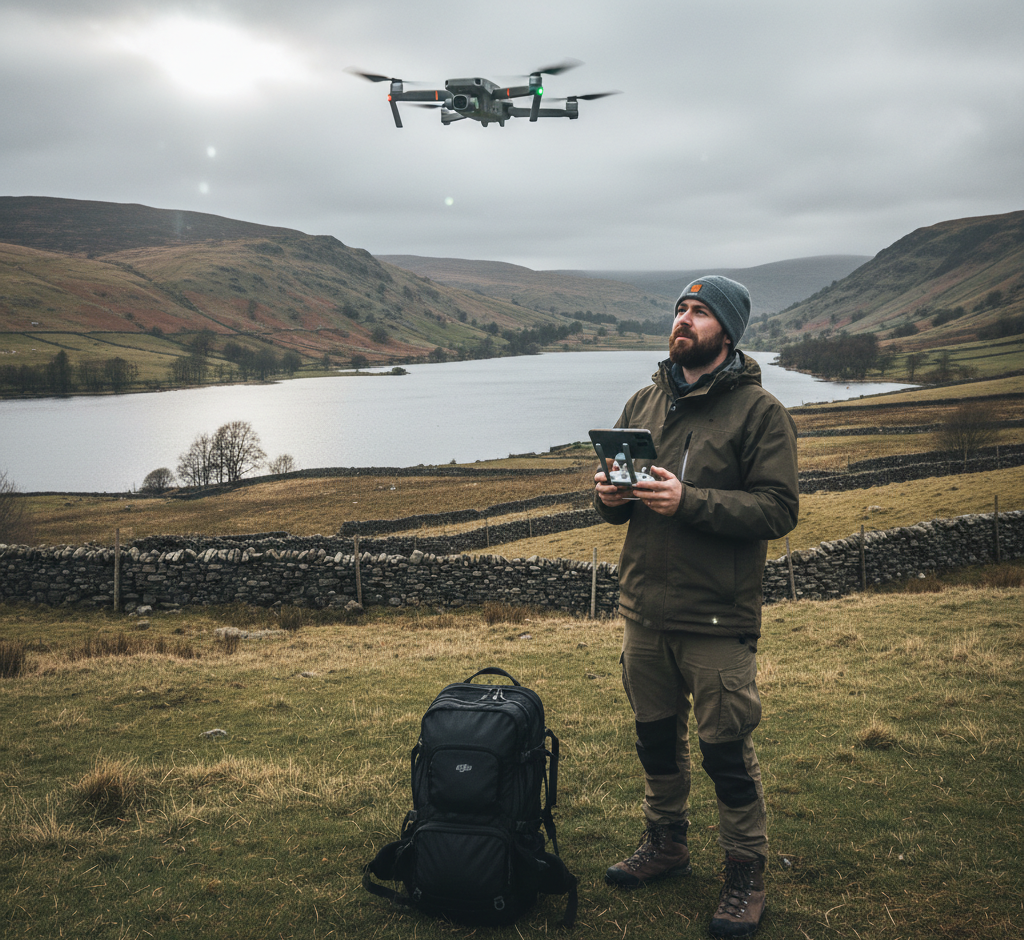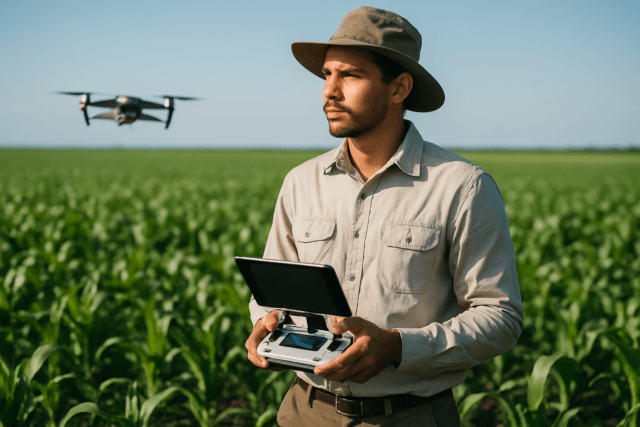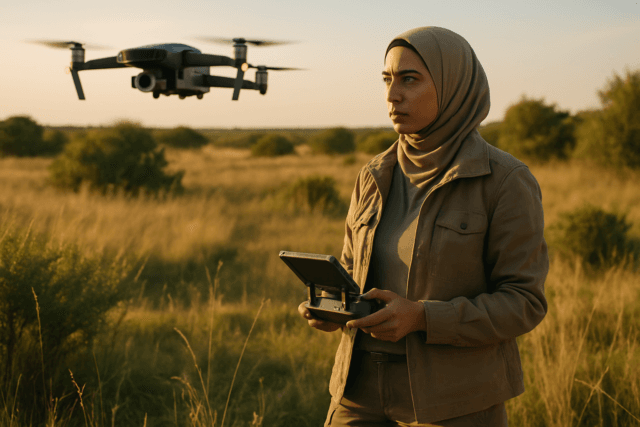The regulatory landscape for UK drone pilots is undergoing its most significant overhaul in years, and the crucial deadline is fast approaching. From January 1, 2026, new rules from the Civil Aviation Authority (CAA) concerning product marking (Class Marks) and electronic traceability (Remote ID) will fundamentally change how and where nearly all unmanned aircraft systems (UAS) can be operated in the UK. This comprehensive guide breaks down the complex new requirements, explains how your current ‘legacy’ drone is affected, and provides a clear compliance roadmap for all pilots.
The Core Change: Introducing the UK Class Mark System (UK0-UK6)
The UK Class Mark system is a new product standard designed to categorise drones based on their weight, performance capabilities, and built-in safety features like Remote ID and geo-awareness. The new UK-specific classes (UK0 to UK6) will dictate the operational subcategory—A1 (Over People), A2 (Near People), or A3 (Far from People)—in which a drone can be legally flown.
Starting January 1, 2026, manufacturers placing new drones on the UK market must apply one of the new UK class marks. The Open Category, which covers most recreational and low-risk commercial flights, will primarily use the UK0 to UK3 classes.
The Open Category Classifications Explained
| UK Class Mark | Maximum Take-Off Mass (MTOM) | Operational Subcategory | Key Operational Rule |
|---|---|---|---|
| UK0 | Less than 250g | A1 (Over People) | Can fly over uninvolved people, but not over crowds |
| UK1 | Less than 900g | A1 (Over People) | Can fly over uninvolved people, but not over crowds |
| UK2 | Less than 4kg | A2 (Near People) or A3 (Far from People) | Requires an A2 Certificate of Competency (A2 CofC) to fly ‘Near People’ |
| UK3 | Less than 25kg | A3 (Far from People) | Must fly well away from people and built-up areas |
| UK4 | Less than 25kg | A3 (Far from People) | Primarily for traditional model aircraft (no automation other than basic stabilisation) |
- Note: UK5 and UK6 are reserved for Specific Category operations, which require an Operational Authorisation from the CAA.
Recognition of EU Class Marks
To simplify the transition for pilots who own or purchase European C-class marked drones (C0 to C6), the CAA has confirmed that these will be recognised as equivalent to the corresponding UK class (e.g., C1 as UK1) until December 31, 2027. This transitional period allows for continued, compliant operation of class-marked drones across the UK and EU rulesets.
Remote ID: What Pilots Must Broadcast for Traceability
Remote ID (RID) is a crucial safety and security measure that requires a drone to broadcast its identification and location information while in flight, using signals like Wi-Fi or Bluetooth. This information can be picked up by nearby devices and is designed to help enforcement bodies determine if a drone is being operated legally. The UK’s system is referred to as Direct Remote ID.
Phased Remote ID Deadlines
The mandatory requirement for Direct Remote ID functionality is being phased in based on the drone’s classification and its date of entry to the market.
Mandatory from January 1, 2026
All new, class-marked drones must have Remote ID enabled from this date.
- UK Class Marks: UK1, UK2, UK3, UK5, and UK6
Mandatory from January 1, 2028
After a two-year transitional period, the requirement for Remote ID will extend to older and non-marked aircraft, provided they meet a specific criteria.
- UK0 UAS weighing 100g or more with a camera.
- Legacy UAS (unmarked, non-class-marked drones placed on the market before Jan 1, 2026) weighing 100g or more with a camera.
- Model Aircraft (UK4) weighing 100g or more with a camera (unless exempted).
- Privately Built UAS weighing 100g or more with a camera.
RID is required to broadcast the Operator ID, the unique serial number of the aircraft, its geographical position and height, and the geographical position of the remote pilot. Operators receive their Remote ID number after obtaining an Operator ID from the CAA.
The Operational Impact on Current ‘Legacy’ Drones
Any drone purchased or distributed before January 1, 2026, is considered a ‘legacy’ aircraft and is unlikely to bear a UK Class Mark. The new regulations significantly restrict the operational flexibility of these drones.
Legacy Drones and the A3 Subcategory
From January 1, 2026, most legacy drones will be confined to operating only within the A3 subcategory (Fly Far from People). This means:
- Far from People: The flight must be conducted in an area where there is no expectation of uninvolved people being present.
- Far from Buildings: The drone must be kept at a minimum horizontal distance of 150m from residential, commercial, industrial, and recreational areas.
The one key exception is for legacy or privately built drones with a maximum take-off mass (MTOM) of less than 250g; these can continue to be flown in the A1 (Over People) subcategory.
The End of the Transitional A2 Concession
A major change for current pilots is the end of the transitional concession that allowed drones between 250g and 500g (such as early DJI Mini models that weighed over 250g with battery) to fly in the A2 (Near People) subcategory. This allowance expires on January 1, 2026.
To maintain the privileges of flying ‘Near People’ (A2) after this date, pilots must transition to a class-marked UK2/C2 aircraft and hold the A2 Certificate of Competency (A2 CofC).
Critical: The Lowered Registration Threshold
In conjunction with the new Class Mark and Remote ID requirements, the CAA is implementing a significant reduction in the weight threshold for mandatory registration.
- Current Threshold (Pre-2026): 250g or more.
- New Threshold (From January 1, 2026): 100g or more.
This change means that virtually every camera-equipped drone on the market, including the small models that were previously exempt, will now require a Flyer ID for the pilot and an Operator ID for the owner.
| Registration Type | New Requirement (From Jan 1, 2026) |
|---|---|
| Flyer ID | Mandatory for anyone flying a drone of 100g or more |
| Operator ID | Mandatory for the owner of any camera-equipped drone of 100g or more |
Next Steps for UK Drone Pilots: Compliance Checklist
To ensure full compliance and maintain the greatest operational freedom under the UK’s new 2026 Drone Class Mark System and Remote ID Requirements, all pilots should take the following steps:
- Check Your Drone’s Status: Determine if your drone has a European C-class mark (C0-C4). If not, it will be considered a legacy drone after January 1, 2026.
- Confirm Operational Category: Understand that legacy drones over 250g without an A2 CofC will be restricted to the far more constrained A3 subcategory.
- Verify Remote ID: Check your drone’s specifications to see if it has built-in Remote ID functionality. If your drone is UK1/UK2/UK3, RID must be enabled from January 1, 2026. If it is a legacy drone 100g or more with a camera, plan for the January 1, 2028 RID deadline.
- Renew or Obtain ID: Ensure you have both a valid Flyer ID and an Operator ID. If your drone is over 100g, the Operator ID is now mandatory for a camera-equipped aircraft.
- Consider Upgrading Competency: If you fly a legacy drone between 500g and 2kg, or plan to buy a UK2/C2 drone, obtaining the A2 CofC is the key to retaining ‘Near People’ (A2) privileges.





